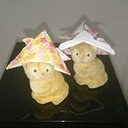Elevated soluble tumor necrosis factor receptor levels in seasonal allergic rhinitis patients.
Słowa kluczowe
Abstrakcyjny
In this study, we examined the symptom scores and tumor necrosis factor-alpha (TNF-alpha), p55 soluble tumor necrosis factor receptor (sTNFR1), and p75 soluble tumor necrosis factor receptor (sTNFR2) levels in the sera and nasal epithelial lining fluids (ELF) of 20 patients with Japanese cedar pollinosis from the pre- to the postseason period, and compared the results with those of 10 nonallergic control subjects. The symptom scores of the allergic subjects were significantly (P<0.01) higher than those of the nonallergic subjects during the early stage and mid-stage of the season. There were no statistical differences between the allergic and nonallergic subjects in the TNF-alpha levels in sera and ELF from the pre- to the postseason. In the allergic subjects, however, the levels of sTNFR1 and sTNFR2 in ELF were significantly elevated during the early stage (P<0.05) and mid-stage (P<0.01) of the season, whereas those in sera did not change from the pre- to the post-season period. The levels of TNF-alpha in ELF were more than 10 times higher than those in sera, whereas the levels of sTNFR1 and sTNFR2 in ELF were less than half of those in sera in the allergic and nonallergic subjects. These results suggest that sTNFR1 and sTNFR2 may play a role in the pathogenesis of nasal allergic reaction.


